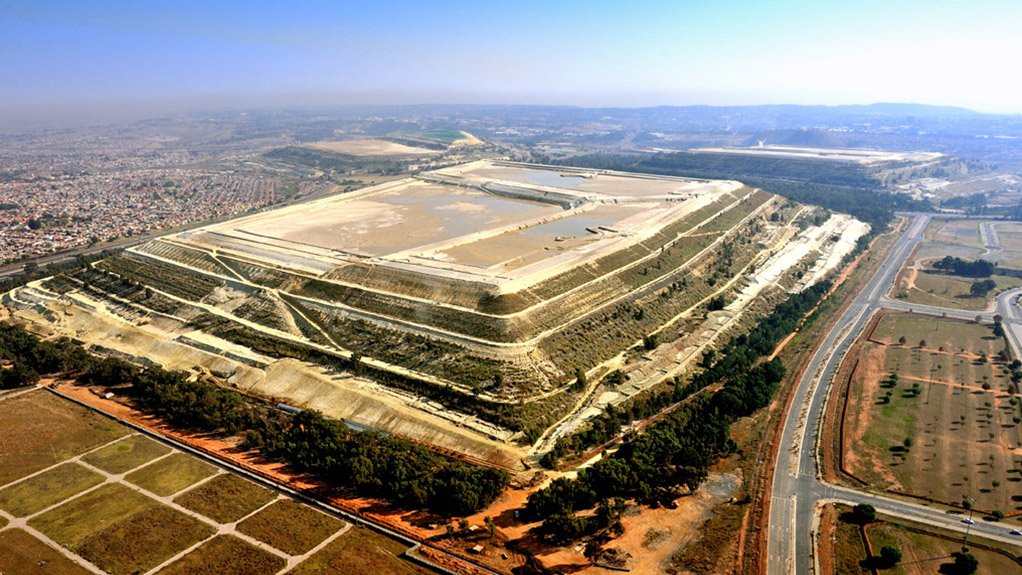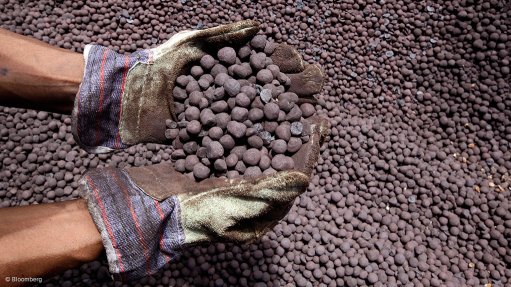‘Metallurgical problems’ force suspension of DRDGold’s FFG circuit
JOHANNESBURG (miningweekly.com) – DRDGold has temporarily suspended the operation of its recently constructed flotation/fine-grind (FFG) circuit, at Ergo Mining's Brakpan plant, to investigate the cause of “metallurgical problems” that have led to lower-than-expected gold production for the third quarter of the 2014 financial year.
DRDGold estimated gold production for the quarter ended March 2014 to be 14% lower compared with the preceding quarter, while all-in sustaining unit costs were estimated to be up by 24% quarter-on-quarter.
Construction of the high-grade facility, which comprised a flotation circuit, a set of fine-grind mills and the cyanide leach and carbon-in-pulp (CIP) circuit, was completed in January and was intended to liberate more gold and increase recoveries by between 16% and 20%.
However, the company said in a statement on Friday that, while the FFG had achieved positive float and grinding results, the CIP section had not yet stabilised and appeared to have also contributed to metallurgical instability and carbon inefficiencies downstream in the existing carbon-in-leach (CIL) circuit or low-grade section.
“Suspending the new section will enable the operational team to stabilise the low-grade circuit and determine the factors that could be affecting carbon efficiencies in both circuits. We expect the original lower-grade CIL circuit to be settled within a month. The subsequent testwork is likely to be completed within a further three- to four-month period,” the company noted.
Incessant rains in February and March, as well as surges, dips and interruptions in the power supply over the period, also negatively impacted both the high-grade and low-grade sections, contributing to the metallurgical instability of both sections.
“The Ergo team will, therefore, use the downtime to install drain valves to prevent the silting up of the float cells during future power fluctuations. They will also install auxiliary power units to thickener underflow pumps to prevent the silting up of thickeners during these trip-outs,” DRDGold said.
POSITIVE INITIAL RESULTS
Initial results from the FFG circuit were “positive and utilisation was generally good”, while flotation efficiencies and the performance of the fine-grind mills were consistent with targets.
Sampling results demonstrated that the amount of gold remaining in solids – the so-called ‘washed residue grade’ – was reduced to within target range.
“This suggested the gold that previously remained inert within the pyrites had been driven off and had become soluble,” DRDGold stated.
However, loaded carbon values remained well below the target range in both the CIP and CIL circuits, which indicated that the gold remained in solution and was not being adsorbed onto carbon.
The company believed that, to some extent this might be attributable to poor carbon efficiency caused by volatile density levels in the feed at various stages in the process, which, in turn, was attributed to the thickeners that managed the flow of feed into the main CIL section.
“It may also be a knock-on effect of the reagents used in the flotation cells,” the company said.
Currently, both carbon circuits of the plant – the higher-grade CIP and the lower-grade CIL – were unstable and were operating well below target range.
THE FFG PROCESS
Elaborating on the FFG process as well as its interaction with the low-grade CIL circuit, DRDGold explained that slurry was sourced from various reclamation sites and delivered to Ergo’s Brakpan plant.
The slurry, or feed, was pumped through three banks of flotation cells to create a concentrate that contained gold-bearing pyrites.
The concentrate then entered a set of fine-grind mills to break down the pyrites and release gold, which would otherwise have remained shielded from the subsequent metallurgical extraction process.
This fine pulp then entered a high-grade leach circuit, where cyanide was added to dissolve the gold in the pulp.
The concentrate was then pumped to the CIP section, where activated carbon was added and the dissolved gold absorbed.
This loaded carbon was processed through an elution circuit, where the gold was stripped off the carbon into a solution. This solution then flowed through a series of electrowinning cells, wherein the gold was electrically deposited onto electrodes.
Periodically, the gold was washed off the electrodes, calcined and smelted into doré bars.
The remaining 96% of the feed then entered the low-grade circuit, first moving through a set of three thickeners to increase its density before being pumped into the main CIL tanks.
“It is essential that the thickeners are in good working order and stable, because the high-grade tail cannot be processed by the low-grade circuit until it has been thickened,” noted DRDGold.
From this point onwards in the low-grade CIL circuit, the feed was subjected to a similar process to that of the CIP circuit – cyanidation, carbon loading, elution, electrowinning and, finally, smelting into doré bars.
Comments
Press Office
Announcements
What's On
Subscribe to improve your user experience...
Option 1 (equivalent of R125 a month):
Receive a weekly copy of Creamer Media's Engineering News & Mining Weekly magazine
(print copy for those in South Africa and e-magazine for those outside of South Africa)
Receive daily email newsletters
Access to full search results
Access archive of magazine back copies
Access to Projects in Progress
Access to ONE Research Report of your choice in PDF format
Option 2 (equivalent of R375 a month):
All benefits from Option 1
PLUS
Access to Creamer Media's Research Channel Africa for ALL Research Reports, in PDF format, on various industrial and mining sectors
including Electricity; Water; Energy Transition; Hydrogen; Roads, Rail and Ports; Coal; Gold; Platinum; Battery Metals; etc.
Already a subscriber?
Forgotten your password?
Receive weekly copy of Creamer Media's Engineering News & Mining Weekly magazine (print copy for those in South Africa and e-magazine for those outside of South Africa)
➕
Recieve daily email newsletters
➕
Access to full search results
➕
Access archive of magazine back copies
➕
Access to Projects in Progress
➕
Access to ONE Research Report of your choice in PDF format
RESEARCH CHANNEL AFRICA
R4500 (equivalent of R375 a month)
SUBSCRIBEAll benefits from Option 1
➕
Access to Creamer Media's Research Channel Africa for ALL Research Reports on various industrial and mining sectors, in PDF format, including on:
Electricity
➕
Water
➕
Energy Transition
➕
Hydrogen
➕
Roads, Rail and Ports
➕
Coal
➕
Gold
➕
Platinum
➕
Battery Metals
➕
etc.
Receive all benefits from Option 1 or Option 2 delivered to numerous people at your company
➕
Multiple User names and Passwords for simultaneous log-ins
➕
Intranet integration access to all in your organisation





















